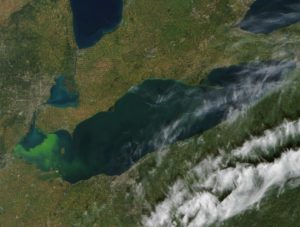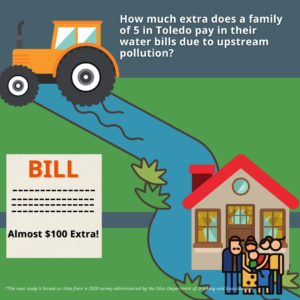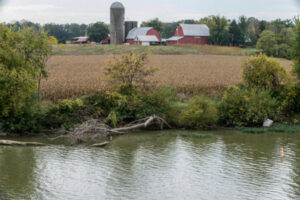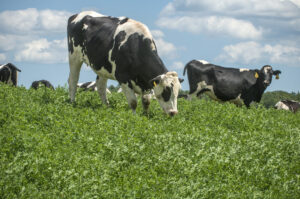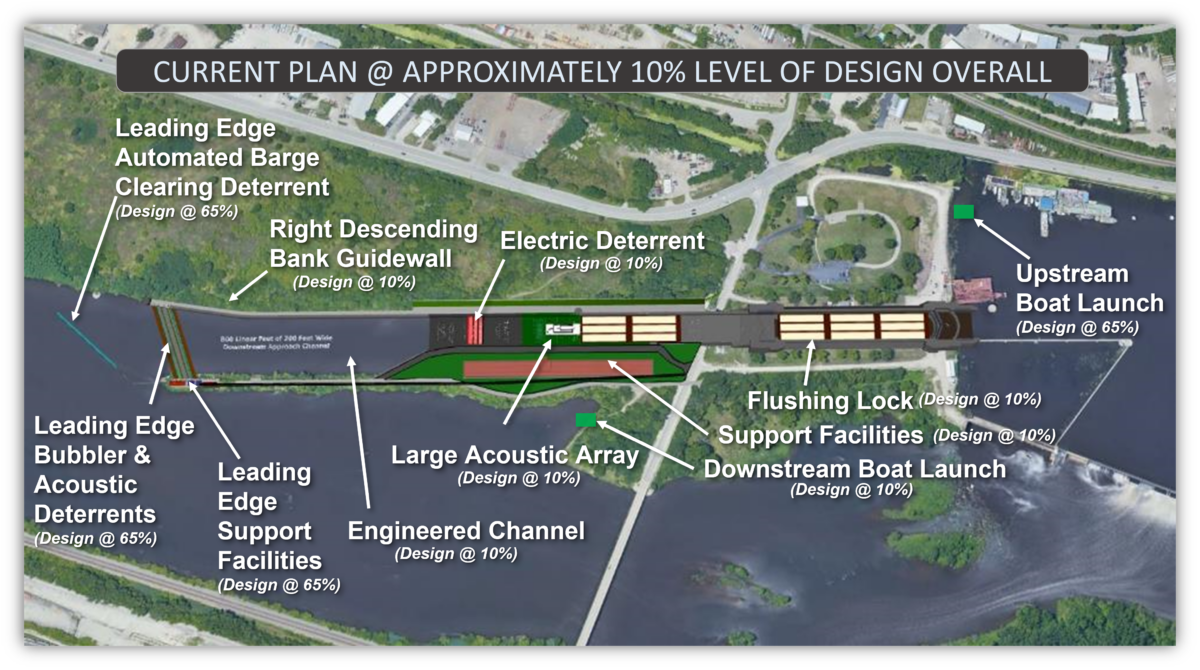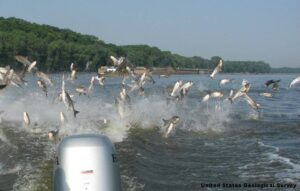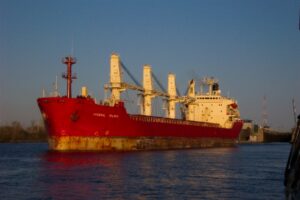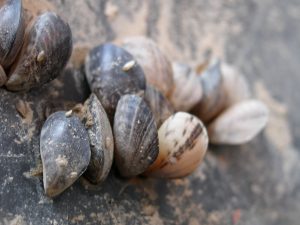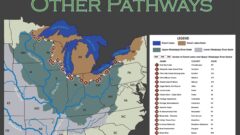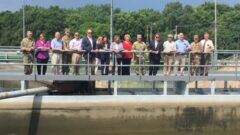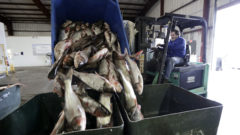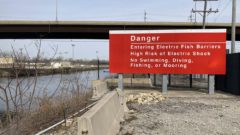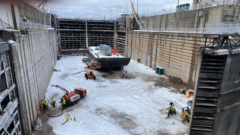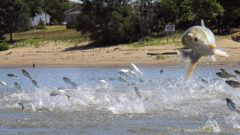Time is running out to keep invasive carp out of Lake Michigan
This opinion piece was first published by the Chicago Sun-Times.
By Molly Flanagan, COO & Vice President for Programs
While Illinois didn’t bring ecosystem-destroying invasive carp to the United States, the state is setting itself up for the blame if the voracious fish overrun the Great Lakes.
Just after Thanksgiving last year, when all of us were still too full to eat another bite, almost a million pounds of hungry invasive carp were pulled from the Illinois River in just one day. Using the Illinois River and other waterways to expand their territory, invasive carp pose a significant threat to the ecological and economic health of Lake Michigan.
Invasive carp have already wreaked havoc on the Mississippi and Illinois rivers. They cause serious damage to native fish populations when they invade lakes and rivers because they out-compete other fish for food. They jump into the air, posing the risk of serious injury to people and making infested waters off-limits to boating. Great Lakes’ communities and industries would be deeply harmed if Invasive carp get into the Great Lakes and its tributaries and inland lakes.
Invasive carp are located less than 50 miles from Lake Michigan. With no known predators once they are past the juvenile stage, these fish pose a severe threat to the economic health of the Great Lakes, specifically the region’s $7 billion commercial and sport fishing industry and its $16 billion recreational boating industry.
For that reason, the U.S. Army Corps of Engineers (Army Corps) has identified building additional structural measures at the Brandon Road Lock and Dam near Joliet as the most feasible way to prevent the upstream migration of invasive carp. By using a series of measures designed to stymie invasive carp, the Brandon Road project will act as the choke point to stop invasive carp from traveling from the Mississippi River Basin into the Great Lakes.
The $1.3 billion project is scheduled to begin construction in October of 2024. That’s good news, because those nearly million pounds of carp taken in one day — the same amount harvested in all of 2022 — are amassed only two locks down from Brandon Road. The bad news is that there’s a huge obstacle to building the defenses at Brandon Road: the state of Illinois.
Michigan and Illinois have agreed to pay $114 million, the entire amount required from local partners, for construction of the project. The federal government has $274 million on hand ready to spend to complete design and engineering, and for the first increment of construction. The project is ready to start once Illinois signs the Project Partnership Agreement with the Army Corps. The state’s manageable concerns about the project have been the subject of seemingly endless delays, even as the state of Michigan has come forward cash in hand and the feds are ready to break ground.
For every month that Illinois does not sign the agreement with the Army Corps, more time is lost. And time is running out to keep invasive carp out of the Great Lakes. Luckily, the state of Michigan is patiently waiting as a willing partner to move Brandon Road forward. All Illinois needs to do to is to say yes to the partnership. Surely the strongest protection for our Great Lakes after a decade of planning is enough of a reason for Illinois to sign on the line.
The post Time is running out to keep invasive carp out of Lake Michigan appeared first on Alliance for the Great Lakes.
News - Alliance for the Great Lakes
News - Alliance for the Great Lakes
https://greatlakes.org/2024/03/time-is-running-out-to-keep-invasive-carp-out-of-lake-michigan/


